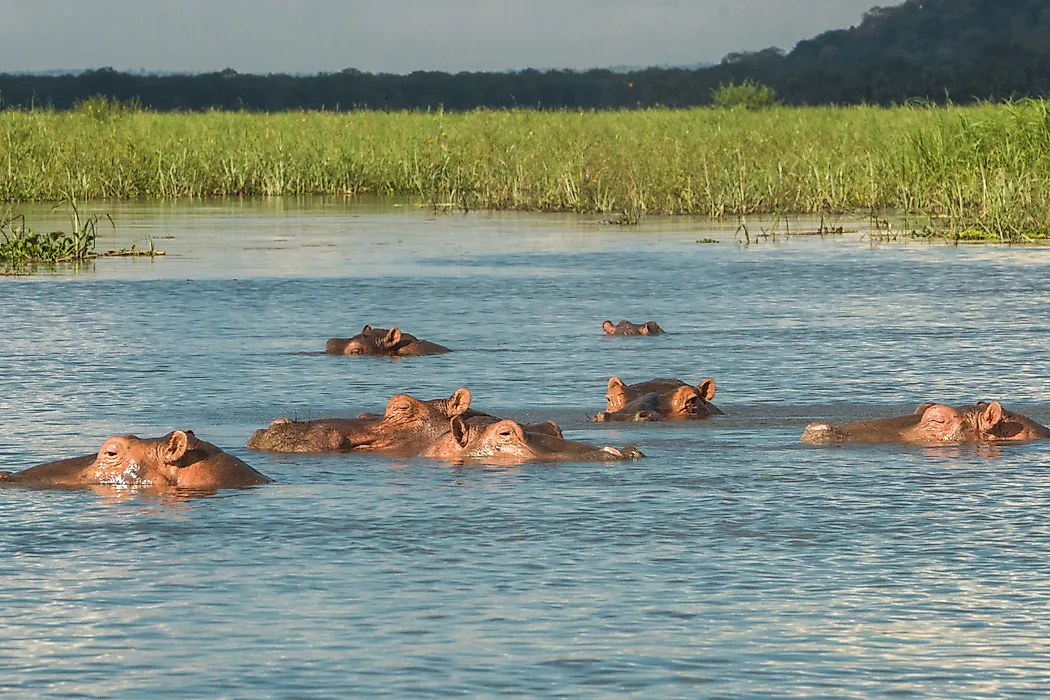Where Do Hippos Live?

What Is a Hippo?
A hippo, or hippopotamus, is a partially aquatic mammal with a primarily vegetarian diet. The hippopotamus is one of the largest mammals to live on land and can reach a weight between 2,870 and 3,310 pounds, depending on its sex. This animal species is often recognized by its barrel-like body shape, short legs, wide snout, and high eyes and ears. It has a unique skeletal structure that allows it to sink to the bottom of large bodies of water. This action allows hippos to walk across the floor of lakes and rivers, rather than swim. Despite its size and body proportions, the hippopotamus may run at speeds of up to 19 miles per hour. Additionally, hippos have an average life expectancy of about 50 years. The genus Hippopotamus is divided into two living species: the H. amphibius and the H. liberiensis (also referred to as the pygmy hippo).
Where Do Hippos Live?
The H. amphibius, which is the larger of the two hippo species, can be found living in sub-Saharan Africa and is primarily located in the eastern regions of the continent. Western Africa is home to the H. liberiensis species, known as the pygmy hippo, although this species is found in much smaller and isolated populations. Significant hippo populations are found in the following countries: Uganda, Kenya, Somalia, Tanzania, Sudan, the Democratic Republic of the Congo, South Africa, Ethiopia, and the Gambia. Hippos make their homes in and around rivers, swamps, and lakes. These bodies of water provide hippos with the opportunity to remain cool during hot afternoons. Aquatic habitats are so important to this species that female hippos even give birth in water. Additionally, the grasses growing in and around these habitats make up the majority of the dietary needs of the hippopotamus. The pygmy hippopotamus tends to prefer forest habitats with bodies of water.
Threats and Conservation
Since hippos are primarily confined to one type of environmental habitat, they face significant conservation challenges due to habitat loss. Increased human population and development projects are encroaching upon traditional hippo territory. Not only does this growth destroy and reduce the number of aquatic habitats available to hippos, but it also prevents remaining hippo populations from accessing other bodies of water. As a result, the global hippopotamus population has decreased by between 7% and 20%. In 2006, it was estimated that only between 125,000 and 150,000 hippos existed, a statistic that prompted the International Union for Conservation of Nature (IUCN) to list the hippopotamus as a vulnerable species. In addition to habitat loss, the hippopotamus is also faced with illegal poaching. Hippo meat is considered a luxury food in central areas of Africa and is sold on the black market. Additionally, hippo teeth are often prized as a suitable alternative to ivory, which is also obtained illegally from elephant tusks. The Virunga National Park in the Democratic Republic of the Congo reported growth in its hippopotamus population in 2016.











